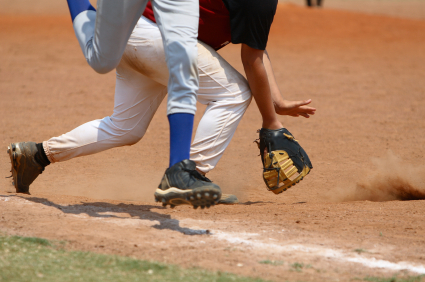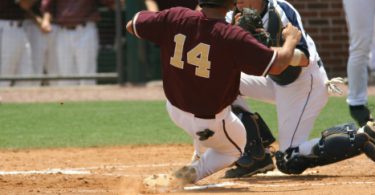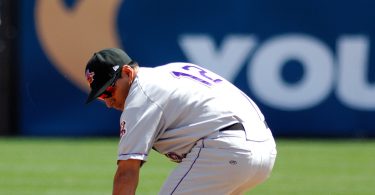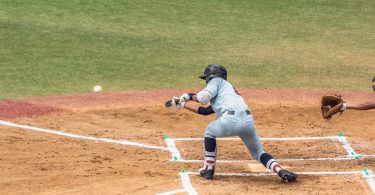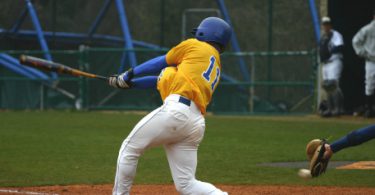By Eric Johnson
The Situation: Nobody on, nobody out, top of the 8th inning. The leadoff hitter is batting, and has good speed. The third baseman is pulled in at the corner to prevent the bunt, and over towards the line to prevent a double.
The Play: The hitter rifles a shot right at the third baseman. He squares up to it, but isn’t able to field it cleanly, and takes an in-between hop off the wrist. The ball squirts just an arm’s length away from him. The leadoff hitter is digging for first, sniffing a single. The third baseman reaches out with his glove hand, and snatches at the ball on the ground. The ball squirts out of the fingers of his glove. He reaches down again, snaps the ball up in his glove, and rifles a throw to first.
The Outcome: The leadoff hitter beats the throw by a half step. Now, with the heart of the order coming up, the offense has set themselves up for a big inning.
What Went Wrong?
Whenever a ball squirts away from you, it can be tempting to reach down and grab it with your glove. Don’t! Making a minor mistake like this is understandable in high school, and you probably won’t get burned for it. But in college, the game speeds up, and fractions of a second matter on every play. The only time you should reach with your glove for a ball is when it is 1) laying motionless on the ground and 2) when it’s the only possible way to make the play.
99% of the time though, you’re going to have time to grab the ball with your bare hand. There are two main reasons why this is always going to be the better way to make the play. First, you’re more sure-handed with your bare hand than with your glove when the ball isn’t moving. It’s very easy for the ball, like in this case, to slip out of the fingertips of your glove. Second, it makes for a faster exchange. When you grab the ball with your glove, you still have to secure it in your bare hand to make the throw. By grabbing it with your bare hand, not only are you eliminating an extra movement, but you are also taking away the possibility that you will fumble the exchange from glove to throwing hand.
No matter what position you play, this situation will come up. Outfielders will experience it on balls that have hit off the wall or gone into the gaps, and stopped rolling. Catchers and pitchers will see it on bunts. Make it your instinct to pick up a motionless ball with your bare hand. Don’t make a mistake because you aren’t prepared and the game speeds up on you. Think the game.

